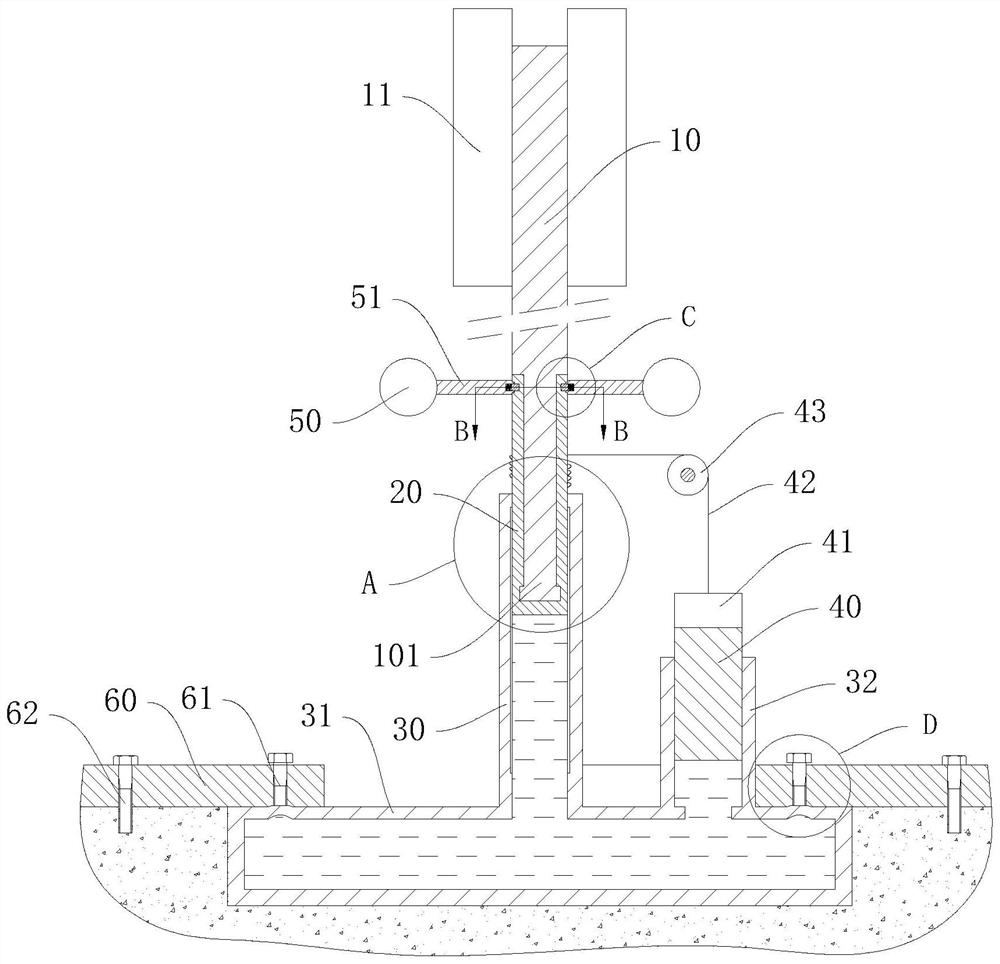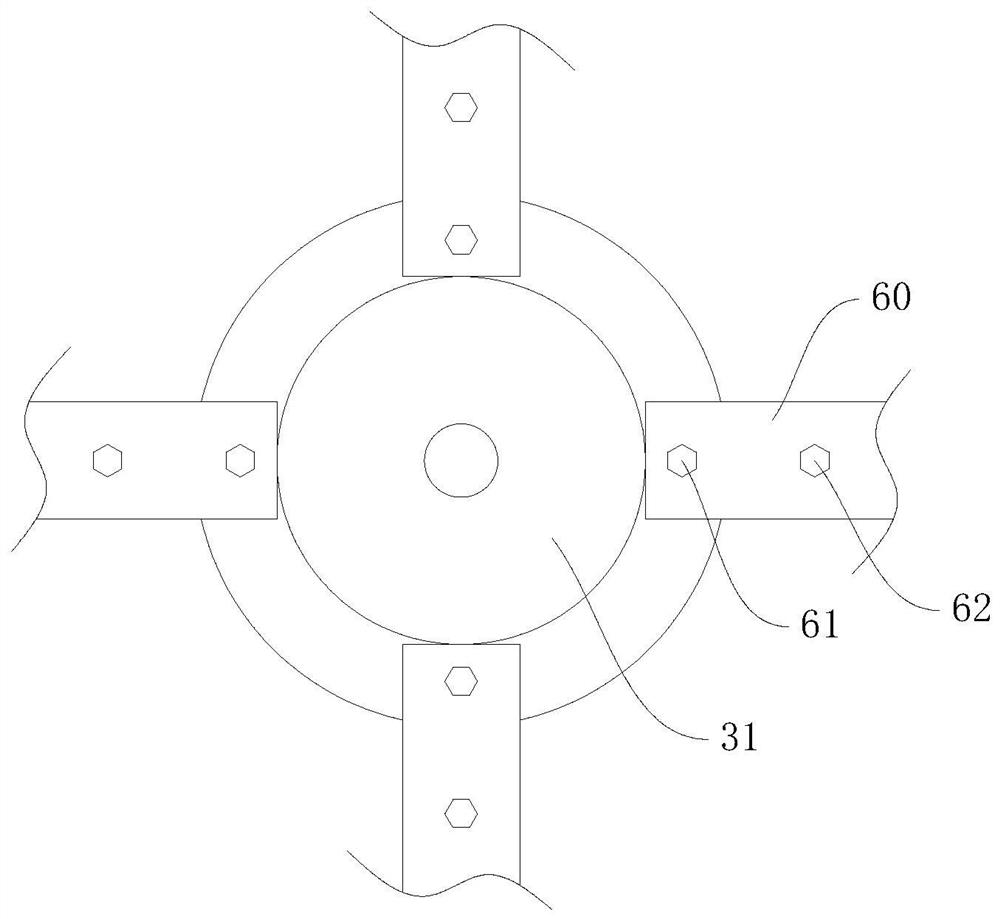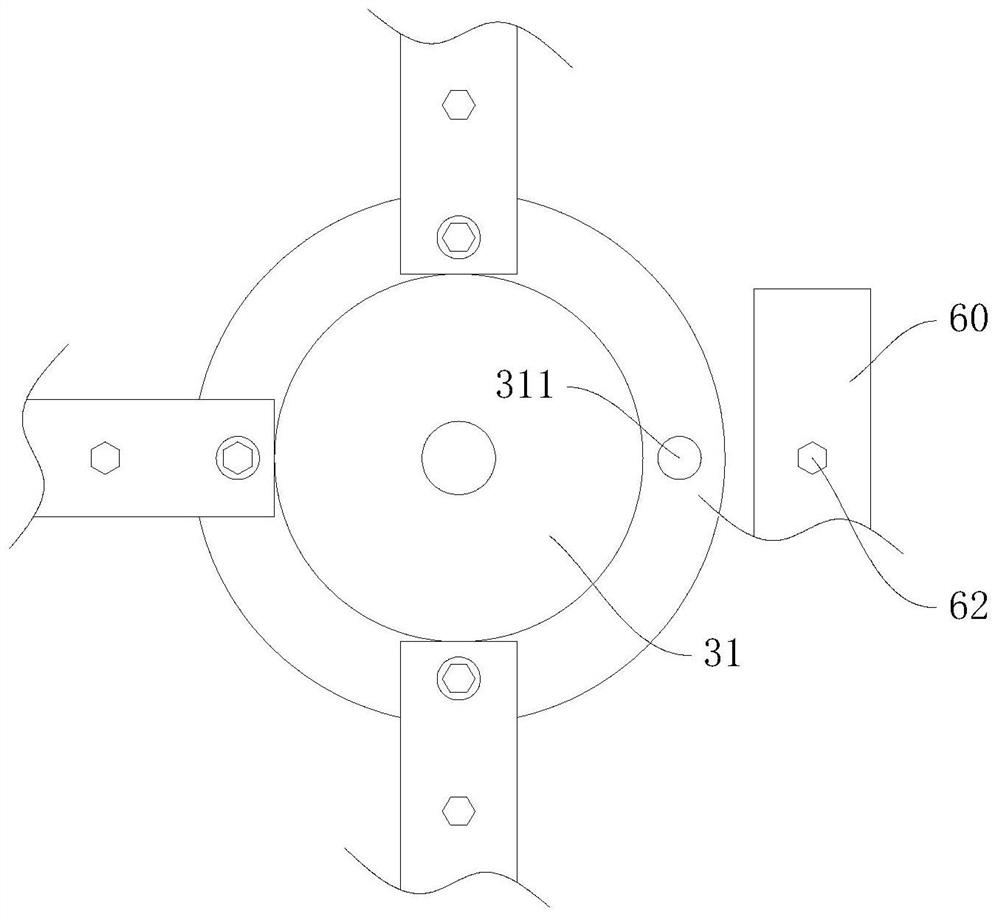Installation method of adaptive windproof communication base station
A technology for communication base stations and installation methods, which can be applied to wind power generation, building types, wind turbines, etc., and can solve problems such as being easily broken by force, and communication base stations are loose and toppled, and achieve the effects of reducing wind resistance and height
- Summary
- Abstract
- Description
- Claims
- Application Information
AI Technical Summary
Problems solved by technology
Method used
Image
Examples
Embodiment 1
[0051] Such as Figure 1 to Figure 4 As shown, an installation method of an adaptive windproof communication base station provided by an embodiment of the present invention, the communication base station includes a transceiver device 11, and also includes a supporting device, a fixing device and a weight:
[0052] The support device includes a base rod 10 and a support rod 101, the support rod 101 is coaxially fixed on the base rod 10, the support rod 101 is located below the base rod 10, and the transceiver device 11 is fixedly arranged on the base rod 10;
[0053] The fixing device comprises a longitudinal rod 30, a flange 31, a pressure plate 60, a compression bolt 61 and a fastening bolt 62, the longitudinal rod 30 is fixedly arranged on the flange 31, and the longitudinal rod 30 and the flange 31 are coaxially arranged , the longitudinal rod 30 and the flange 31 are both hollow structures, the longitudinal rod 30 penetrates into the flange 31, and the upper end of the lo...
Embodiment 2
[0071] In the first embodiment, since the support rod 101 remains at the top when the wind force is small or there is no wind, the hydraulic oil will be lost. When the hydraulic oil is lost, the weight 40 will move down, which will cause the cable 42 to be tight. The cable 42 is prone to wear or damage. In addition, after the hydraulic oil is lost, since the support rod 101 cannot move up, the cable 42 has no extra margin for the weight 40 to move down, resulting in a decrease in hydraulic oil pressure, which cannot be effectively maintained. The tightening bolt 61 and the tightening bolt 62 are clamped. Therefore, in this embodiment, the upper end of the weight 40 is fixedly provided with a telescopic part 41, and one end of the cable 42 is fixedly connected to the rotating sleeve 20, and the other end is fixedly connected to the telescopic part 41. The portion 41 expands and contracts when subjected to an external force. After the hydraulic oil is lost, the liquid level of t...
Embodiment 3
[0074] On the basis of Embodiment 1 or 2, when the wind force is small, the structural strength can meet the requirements, and there is no need to rotate the rotating sleeve 20. Frequent rotation of the rotating sleeve 20 will cause accelerated wear of the entire device, and when the wind is strong, the wind resistance is large. The load that the base bar 10 is subjected to becomes larger, and it is easy to cause damage to parts such as the base bar 10 or the support bar 101. In order to prevent the above problems, as Figure 7 to Figure 9 As shown, this embodiment also includes a first pawl 52, a second pawl 54, a first return spring 53 and a second return spring 55;
[0075] The connecting rod 51 is rotatably arranged on the rotating sleeve 20 along the circumferential direction of the rotating sleeve 20, and the rotating sleeve 20 is provided with a first ratchet groove matching with the first pawl 52 and a second ratchet groove matching with the second pawl 54. Two ratchet...
PUM
 Login to View More
Login to View More Abstract
Description
Claims
Application Information
 Login to View More
Login to View More - R&D
- Intellectual Property
- Life Sciences
- Materials
- Tech Scout
- Unparalleled Data Quality
- Higher Quality Content
- 60% Fewer Hallucinations
Browse by: Latest US Patents, China's latest patents, Technical Efficacy Thesaurus, Application Domain, Technology Topic, Popular Technical Reports.
© 2025 PatSnap. All rights reserved.Legal|Privacy policy|Modern Slavery Act Transparency Statement|Sitemap|About US| Contact US: help@patsnap.com



